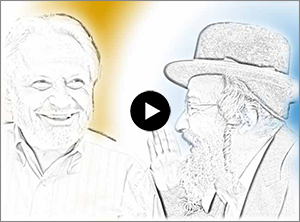Yom Kippur Vidui
I had an insight this past Yom Kippur about Vidui. Why do we say Vidui both in the silent Shemoneh Esrai and again in the Chazaras HaShatz, in the repetition? I don’t know whether this question is asked, nor if so what they answer, and I didn’t really check out whether my thoughts are correct. But I wish to record them before I forget them in the preparations for Sukkos.
Searching for Jewish Beliefs? Click Here for my main article on Jewish Beliefs.
Ashamnu Bagadnu
When I said Ashamnu, Bagadnu, etc. I thought to myself, wow, that’s really a problem, ashamti, bagadti. I really have to get my act together and take it upon myself not to repeat those mistakes, ever. But then comes along the repetition, and I see that everyone is saying Ashamnu Bagadnu. Hey, everyone is doing it, and there’s a certain comfort in that. And then I thought, no, the opposite. That’s why we say Vidui twice, once by ourselves, and then again together. Because I have two problems, I have two responsibilities which I have been lax about. I have a responsibility regarding my own behavior, and I have a second responsibility in that I am part of a community where everyone is “doing it”. Have I done all that I could in order to get my own behavior in shape? And have I done all that I could to do my part that the community is behaving correctly?
We find that the Almight’y made a covenant with the Jewish people in the Parsha Ki Savo, regarding the tochacha, and then again in the Parsha Nitzavim. The latter is the communal responsibility (Arvus) that each person has with his fellowman.
So that’s why I have to say Vidui twice — once for my own behavior and another time for the community’s behavior for which I am also partially responsible.
If you have feedback, please leave a comment.






Leave A Response